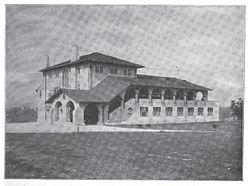
Fort Washington was a fortified stockade with blockhouses built by order of Gen. Josiah Harmar starting in summer 1789 in what is now downtown Cincinnati, Ohio, near the Ohio River. The physical location of the fort was facing the mouth of the Licking River, above present day Fort Washington Way. The fort was named in honor of President George Washington. The fort was the major staging place and conduit for settlers, troops and supplies during the settlement of the Northwest Territory.
Samuel Hannaford was an American architect based in Cincinnati, Ohio. Some of the best known landmarks in the city, such as Music Hall and City Hall, were of his design. The bulk of Hannaford's work was done locally, over 300 buildings, but his residential designs appear through New England to the Midwest and the South.

The Isaac M. Wise Temple is the historic synagogue erected for Rabbi Isaac Mayer Wise and his congregation in Cincinnati, Ohio. Wise was among the founders of American Reform Judaism. The temple building was designed by prominent Cincinnati architect James Keys Wilson. Its design was inspired by the Alhambra at Granada.

Arnold William Brunner was an American architect who was born and died in New York City. Brunner was educated in New York and in Manchester, England. He attended Massachusetts Institute of Technology, where he studied under William R. Ware. Early in his career, he worked in the architectural office of George B. Post. He was a Fellow of the American Institute of Architects after 1892 and was appointed by Theodore Roosevelt to the United States Commission of Fine Arts in Washington, D.C. He was a member of the New York Fine Arts Commission, the American Civic Association, The Century Association, The Engineer's Club, The Players, the Cosmos Club in Washington D.C., the National Institute of Arts and Letters, The Union Club of Cleveland, and several other organizations. In 1910, he was elected to the National Academy of Design as an Associate member, and became a full member in 1916. Brunner was also known as a city planner, and made significant contributions to the city plans of Cleveland, Ohio, Rochester, New York, Baltimore, Maryland, Denver, Colorado, Trenton, New Jersey, and Albany, New York. Brunner was, for a short time, partnered with Thomas Tryon as the firm Brunner & Tryon.
The Rockdale Temple, Kahal Kadosh Bene Israel, is the oldest Jewish congregation west of the Allegheny Mountains, the oldest congregation in Ohio, the second oldest Ashkenazi congregation in the United States and one of the oldest synagogues in the United States. It is located in Amberley Village, a suburb of Cincinnati, Ohio and is easily accessible from both I-71 and I-75 via the Ronald Reagan Cross County Highway.

Avondale is a neighborhood in Cincinnati, Ohio. It is home to the Cincinnati Zoo and Botanical Garden. The population was 11,345 at the 2020 census.
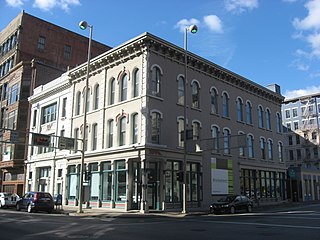
H. W. Derby Building is a registered historic building in Cincinnati, Ohio. The building was designed by architect Samuel Hannaford. It listed in the National Register on March 3, 1980.

St. Luke's Episcopal Church, formerly the Episcopal Church of the Resurrection, is a historic Episcopal church in the Sayler Park neighborhood of Cincinnati, Ohio, United States. Designed in the 1870s by master architect Samuel Hannaford, it has been named a historic site.

The Sherith Israel Temple is located at 624 Ruth Lyons Lane, in the backstage entertainment district in downtown Cincinnati, Ohio. This is the oldest existing synagogue building west of the Allegheny Mountains and the fourth oldest building in downtown Cincinnati. It is the seventh oldest synagogue building in the United States.
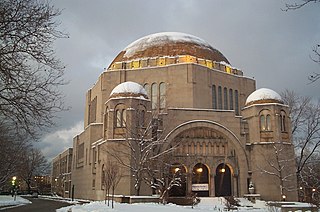
Milton and Tamar Maltz Performing Arts Center at Temple–Tifereth Israel is a 1200-seat historic arts and religious venue on the campus of Case Western Reserve University located on the Hough and University Circle border at Silver Park in Cleveland, Ohio.
Temple Israel is the oldest synagogue in Columbus, Ohio, and a founding member of the Union for Reform Judaism. Formed as early as 1846 as the Orthodox Bene Jeshurun congregation, its first religious leader was Simon Lazarus, a clothing merchant who founded what would become Lazarus department stores.

Frederick W. Garber was an American architect in Cincinnati, Ohio and the principal architect in the Garber & Woodward firm with Clifford B. Woodward (1880–1932). The firm operated from 1904 until it was dissolved in 1933 Their work has been described as in the Beaux-Arts tradition and included buildings on the University of Cincinnati campuses, schools, hospitals, commercial buildings, "fine residences" and public housing.
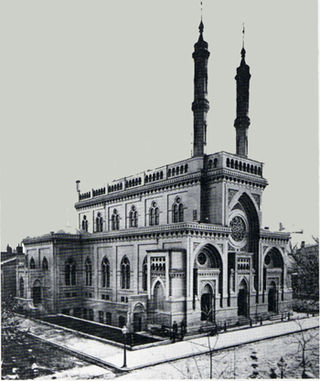
James Keys Wilson was a prominent architect in Cincinnati, Ohio. He studied with Charles A. Mountain in Philadelphia and then Martin E. Thompson and James Renwick in New York, interning at Renwick's firm. Wilson worked with William Walter at the Walter and Wilson firm, before establishing his own practice in Cincinnati. He became the most noted architect in the city. His Old Main Building for Bethany College and Plum Street Temple buildings are National Historic Landmarks. His work includes many Gothic Revival architecture buildings, while the synagogue is considered Moorish Revival and Byzantine Architecture.
Charles C. Crapsey was an American architect known for his church designs. He trained under James K. Wilson from 1865 to 1873, worked on his own between 1873 and 1888, and then with Wilson again from 1895 to 1901. He worked with William R. Brown from 1889 to 1895 and with E. N. Lamm from 1901 to 1909. His work is distinctive for its creative combinations of shaping, massing, and materials, and Crapsey is known especially for his design of churches. He was born in Fairmount, Ohio and died in Cincinnati.

Alfred Oscar Elzner (1862–1933) was a prominent American architect in Cincinnati, Ohio. Along with George M. Anderson, he formed a partnership known as the firm of Elzner & Anderson.
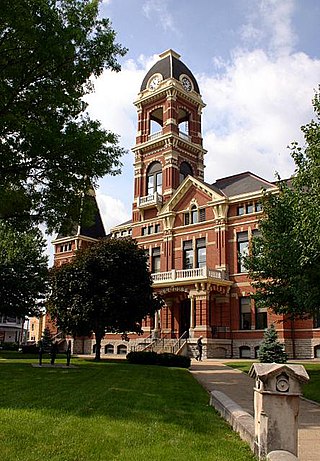
Albert C. Nash (1825-1890) was an American architect best known for his work in Milwaukee and Cincinnati.

Morris Homans Whitehouse was an American architect whose work included the design of the Gus Solomon United States Courthouse in Portland, Oregon.

Temple Israel is a Reform Jewish congregation in Memphis, Tennessee, in the United States. It is the only Reform synagogue in Memphis, the oldest and largest Jewish congregation in Tennessee, and one of the largest Reform congregations in the U.S. It was founded in 1853 by mostly German Jews as Congregation B'nai Israel. Led initially by cantors, in 1858 it hired its first rabbi, Jacob Peres, and leased its first building, which it renovated and eventually purchased.





